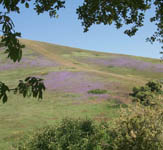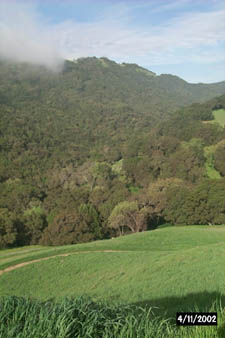 |
|||||
|
|
Why would an
environmentalist
vote
against
Measure CC?
|
||||
|
|
Former Park District Director Harlan Kessel's recent letter to the Editorial Board of the Oakland Tribune: 20th October 2004 I am a retired book publisher (University of California Press) and served some seventeen years (1975-1992) as Director, Ward 2, East Bay Regional Park District, representing the Oakland, Orinda, Lafayette, and Moraga area. Over the years I worked closely with William Penn Mott, Jr., Richard Trudeau, and Pat O’Brien -- all general managers of the East Bay Regional Park District. Until recently, these were the golden years of the Park District: years of wide public support, astonishing growth, and the passage of Measure AA, a $200 million bond issue for parkland acquisition. Sadly, today the District’s public support is sagging and is riddled with bureaucratic incompetence, scandal, arrogance, and almost complete lack of oversight by its elected Board of Directors. What follows are some of my major concerns about the state of the District and why it is drifting into mediocrity—this from a park system that used to be described as one of the great urban park systems of the United States. Urban Equity The Tribune’s files will reveal that after the $200 million bond issue passed, the Park District began to starve the urban areas (mostly the Richmond, Berkeley, Oakland shoreline cities) and divert the money to southern Alameda County and to Contra Costa County. Then general manager Pat O’Brien stated that Oakland may have had 20% of the population but it only provided 10% of the property tax so it shouldn’t complain about imbalance. The Board—almost completely composed of people living in the suburbs—saw this as a great opportunity to get more money for their districts and arrogantly rubberstamped the radical change in policy, up to that time termed the “balanced parkland plan” in the District’s Master Plan. Along with many conservationists I fought for some years to turn this policy around—and so it was, until now with Measure CC. All the improvements and projects in Measure CC are scheduled already and have merely been isolated so that Oakland, Berkeley, and Richmond pay for what the District should pay for, District-wide. The District is saying that if these cities want the services they will have to tax themselves separately while the rest of the District goes tax-free. Follow the money. We’re right back to square one. This is a very dangerous step for the District to take and could lead, eventually, to a breakup of the District and returning its lands to the cities and counties. That is my main concern—the future of this great park system. There are other concerns as well—financial mismanagement, poor employee relations, salary imbalances, lack of oversight of the District’s non-profit Regional Parks Foundation through which a great deal of money flows without public oversight, poor land stewardship—particularly in grazing and bicycle environmental damage—a rubberstamp Board, and on and on. The District needs massive reform, new management, and stronger leadership. Balkanizing the District with such a regressive tax proposal as Measure CC is very bad government and should not be supported.
HARLAN KESSEL
|
||||
|
|
Why is the
Green Party
of both Alameda and Contra
Costa Counties urging a
"NO-NO"
on
Measure CC?
|
||||
|
Here's why we suggest voting: "NO-NO on CC"
"Even the Regional Parks Association has refused to support it."
|
After failing three times in six years to pass new parcel taxes, the East Bay Regional Park District has a new scheme to impose special parcel taxes on urban areas only—that means Oakland, Berkeley, and Richmond for the most part. All the rest of Alameda and Contra Costa counties (Martinez, Walnut Creek, Lafayette, Fremont, Hayward etc.) would be untaxed for identical “services.” Measure CC is truly an outrageous proposal and very bad government. That is why, once again, many informed environmentalists oppose Measure CC. The Park District claims, as before, they will use the money for resource protection and restoration and they list a bunch of worthwhile-sounding projects (all, by the way, previously scheduled from their general fund). In reality, this is a bit of hoodwink. The Park District is actually starving the cities and using these projects for campaign issues rather than actually doing them. If that sounds harsh, consider this: the Park District, almost alone under local government, enjoys an ever-increasing tax base. Each year their property tax revenue goes up—approximately $5 million every year—and this will continue in the foreseeable future. And how does the Park District spend this automatic largesse? They have some of the highest comparable salaries in California and some of the best benefits. The General Manager makes more than the Governor. They also have an incredible ratio of managers to staff. For instance, while the California average ratio for police officers to sergeants is 8 to 1, at the District there are less than 4 actual officers for each member of the brass. They have a $2 million+/year, 14 person public relations department—far bigger than cities and counties ten times their size. The Park District whines that it “lost” $6 million in the Governor’s budget cuts but this is merely chump change. The Governor’s cut is only for two years while the Measure CC parcel tax is for fifteen years! The most socially significant objection to Measure CC, however, has less to do with its cost than with source of funding. The Park District is proposing to tax some of its poorest residents—the urban corridor along the Bay, which includes Richmond, San Pablo, and Oakland—while letting the richest off totally free. That’s right: Lafayette, Orinda, Moraga, Alamo, and Blackhawk are all exempt from this new tax. And all commercial property (Bank of America, Exxon, Safeway, etc.) is excluded. Where is the justice in that? This is a REGIONAL park district. Shouldn’t all residents pay? How did it happen, do you suppose, that the Park District is proposing such a regressive tax measure, where the poor support the rich? This is the work of the District’s expensive team of “consultants,” who have been polling—at public expense—for years. That’s how the “urban corridor” concept came about. Let’s tax ’em where we win, social injustice be damned. Certainly the District should not be rewarded for such cynicism. Opposition to Measure CC is NOT a vote against parks. That's why both the Alameda and the Contra Costa Green Party oppose Measure CC. Even the Regional Parks Association has refused to support it. What a vote against Measure CC really does is this: it tells a wasteful public agency that it needs to learn to live within its means—just like the rest of us—and that it should not use chicanery to extract more from its poorest and most supportive residents. Measure CC is just bad government. Even the most ardent park supporter should vote “NO-NO on CC.” Karen Weber, Former EBRPD Personnel Director ('77-'96), Oakland Alan La Pointe, Chair, Friends of Wildcat Canyon; Co-Chair, Friends of Parks, Richmond Harlan Kessel, Former EBRPD Director (17 Years), Oakland Paul Merrick, Chairman, Dunsmuir Ridge Alliance; Co-Chair, Friends of Parks, Oakland |
||||
|
Some other facts you should know
|
Does East Bay Regional Park District need the money??? Not according to EBRPD's own revenue chart. EBRPD is illegally expending public funds to advocate passage of new taxes July 2004 -- EBRPD Benefit Assessment District (BAD) tax scheme fails
|
||||


